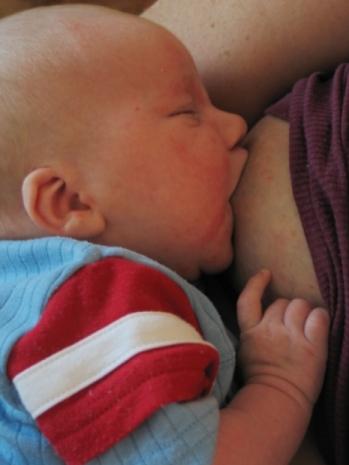One of the characteristics of all mammals is the mother’s ability to produce milk to nourish her baby. This milk production takes place within the mammary glands. It is controlled by hormones within the mother’s body and delivered to the baby through the mammary glands via the nipple.
Function
Although female breasts are considered sexual, the mammary glands are not part of the reproductive system of a female. The function of the mammary glands is to produce the mother’s milk in order to nourish the baby.
Description
These mammary glands are actually a type of sweat or secretion gland where the female produces the milk. They are located inside a female’s breast, with ten to fifteen ducts extending from the milk-producing ducts to the nipple. The size and shape of a mother’s breasts has nothing to do with her ability to produce milk for her baby.
Hormones Controlling Milk Production
Serum prolactin, which is necessary for the production of milk, is present in all humans. During pregnancy, it increases in amounts, reaching its peak towards the third trimester. During the pregnancy, the progesterone produced by the placenta blocks the receptors that allow the prolactin to tell the mother’s mammary glands to produce milk. When the placenta is delivered after birth, the levels progesterone decreases and the prolactin signals the mother’s body to produce milk. Generally, within second or third day following birth, the mother’s breasts begin secreting milk.
Amount of Milk
The first few days after birth, it might appear that the mother’s mammary glands are producing enough milk to feed multiples. The least stimulus will promote the milk’s “let down” effect, even something as simple as the mother thinking of her baby or hearing another baby’s cry. Eventually, the mother’s body will adjust and the milk let down will be triggered by her baby’s suckling. Mothers of multiples can stimulate their mammary glands to produce more milk. In the days following birth, mothers can use a breast pump for several minutes after each time they nurse their babies.
Storage Capacity
It was thought that the breast did not have the ability to store milk and it was made while the baby nursed. However, this is not the case. According to Lactation Consultant, a recent study showed that each breast has the ability to store milk. Furthermore, the size of the mother’s breast was not an indication to the amount of milk they could store. Mothers with smaller storage capacities tended to nurse more frequently than mothers who were able to store more. But they all produced the same amount of milk within a 24-hour period.





